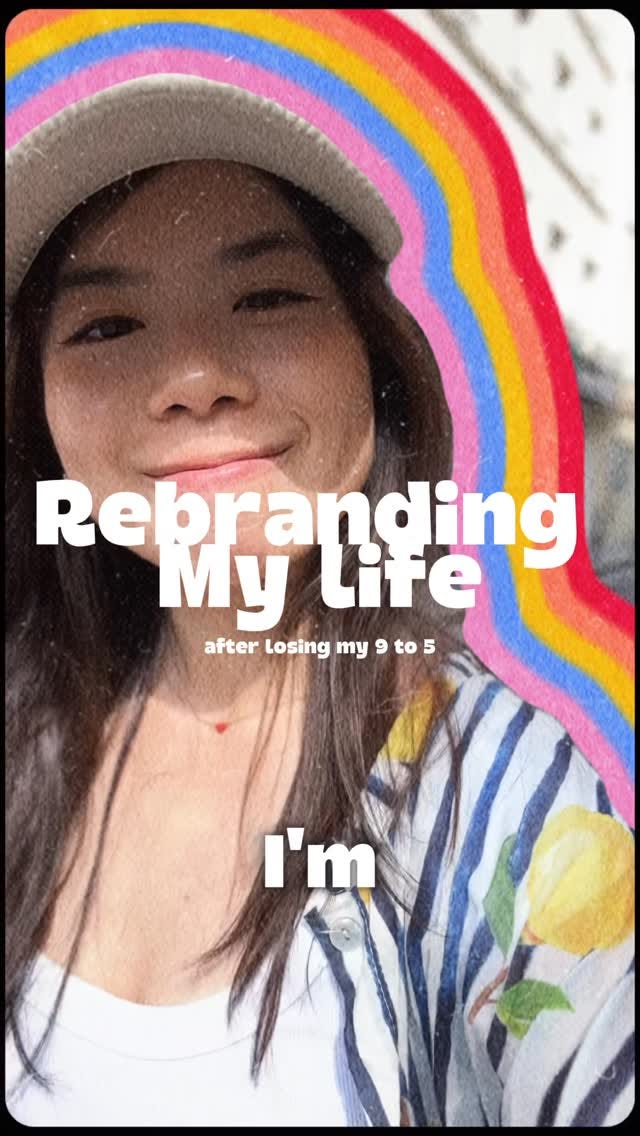Most people hide their mess. I did too.
For over a decade, I worked as a Brand & Content Director. My job was literally to make (often, messy) things look good.
But here’s what I learned the hard way: it doesn’t matter how good it looks on the outside if you feel terrible on the inside.
I worked at companies that said all the right things on the surface.
Great brand, great story. But inside? Misaligned cultures. Broken promises.
Eventually, I realized I was doing the same thing in my own life—curating, performing, trying to hold it all together.
And then, I lost my job.
One that I didn’t even love—but had built my identity around.
Even though I felt liberated from a role that wasn’t right for me, I still felt ashamed. Like I’d failed. I wasn’t sure who I was without the title. I didn’t know what I was gonna do next.
So I did the only thing I knew how to do: I started sharing my story.
Not the polished, Linkedin-ready version, but the messy truth. The doubts. The fears. The questions in my head. Just processing everything publicly, through posts like this one about allowing myself to not have a plan, or this rebranding my life video series where I start every episode with “I recently lost my job…” and talk about what’s unfolding in real time, and sharing it on Linkedin.
I’ve always processed through sharing, ever since my angsty teenage blogging days (with Linkin Park or Simple Plan blasting in the background… my username was animosity_xx, not kidding).
So this time, I didn’t make a big splash. No launch. Just posts. Trying to figure out what the hell just happened and what I wanted next.
But many people resonated.
Strangers messaged me. Friends sent long voice notes. Former colleagues said, “You put into words what I didn’t know how to say.”
The more I shared what I thought would make people turn away, the more they leaned in.
That’s when I started getting questions—not just about what happened, but how I was saying it.
“How are you so clear in your voice?”
“Can you help me do this?”
At first, I wasn’t even sure what “this” was.
I was just trying to reclaim my voice. To feel like me again after an experience that had left me feeling inauthentic and icky.
But looking back, I realized: I’d stumbled into something powerful. I was turning my mess into a message.
And other people wanted to do it, too.
From Mess to Message: The M.E.S.S. Method™
Once I saw the pattern, I couldn’t unsee it. I saw a pattern in how I was processing—and in the questions I was asking others. So I distilled it into something repeatable. Something I could share.
And yes, because I’m a branding nerd, I couldn’t resist giving it a name.
That’s how The M.E.S.S. Method™ was born. A framework for turning the story you’re afraid to tell into your most powerful message:
Meaning – find the deeper lesson in your experiences
Embodiment – align your inner truth with how you show up
Self-acceptance – embrace the parts of you you’ve been hiding
Self-expression – share your story with clarity, courage, and creativity
I’ve started using it with my first clients (!!), and watching them go from “I don’t know what to say” to “OMG yes, that sounds like me” has been pure magic.✨
These are the shifts I’m seeing and have experienced myself:
You stop second-guessing what to say—because you know your message.
You stop sounding like everyone else—because you finally sound like you.
You stop hiding—because you’re showing up with purpose and personality.
Those moments remind me why I absolutely LOVE this kind of branding work:
Not as a PR strategy, but as a way to help people feel seen and heard, as themselves.
Why this matters now
I’ve always believed in the power of vulnerability and honesty.
And I’ve seen what it can do.
Years ago, I co-created a docu-series called Onboarding Joei. It was raw, real, and completely unscripted. I shared what most people would hide: my doubts about starting the job, tensions with leadership, the parts of work we usually keep quiet.
It blew up. We won awards. At one point, they joked about renaming the company after me (not joking).
It cut through the noise because it was honest. And that realness—emotional truth, unsanitized storytelling—is what made it unforgettable.
And now, in 2025, this kind of realness is rarer than ever.
We’re in an age where AI can make anything look perfect.
Feeds are full of polished sameness. Everyone sounds like they copied the same playbook.
But the people we trust, follow, and remember?
They’re not the ones who look perfect.
They’re the ones who feel real.
Still, the most common fear I hear is:
“I don’t want to turn people off.”
And yeah—some people will be turned off.
They will think it’s too much, too personal, too weird, too unprofessional.
When you start showing up as yourself, some people will leave.
But that’s a good thing. Because those are not your people.
Being yourself is a powerful filter.
The wrong ones leave. And the right ones find you.
More importantly, the alternative—watering yourself down to please everyone—means you stand for nothing. And in a world drowning in sameness, that’s the fastest way to be forgotten.
Owning your story doesn’t just feel good. It’s strategic.
Because when you know your message, you know what to say. On Linkedin, in interviews, on podcasts, in rooms where it matters.
It helps you:
Stand out in a sea of generic voices (for the right reasons)
Attract the right people (and filter out the wrong ones)
Build trust and connection faster than any growth hack
Show up with clarity and confidence everywhere
Want to try it? Start here.
These are some of the reflection prompts I share before a session.
Use them as journal questions or conversation starters with yourself:
💭 Prompts to reflect on:
What’s something you’re really afraid to share or feel insecure about? ← you’re likely not alone
What parts of your story have shaped you, but you rarely talk about online? ← this is your hero journey
What are you currently working through (professionally or personally) that could become part of your message, once reframed? ← these are your pain-to-purpose threads
What do you wish more people knew about you, especially in your industry or field? ← that’s your unique POV
If you could give others permission to do or feel one thing by showing up as yourself, what would it be? ← that’s your mission
(One of mine: That you don’t have to be perfectly polished to be powerful. Your fear and messiness aren’t flaws—they’re often your most compelling message.)
This started as an experiment. A way to find my way back to my voice.
I didn’t expect it to turn into a method. Or an offer.
But somehow, it feels both surreal… and totally obvious. Like, of course this is the work I’m meant to do. This work feels like the most aligned thing I’ve ever done.
It brought me home to my creativity and purpose.
And maybe, it can do the same for you.
Because rebranding isn’t about becoming someone new.
It’s about becoming more you.
Big love,
Joei
💌 If this resonates, I’d love to hear what came up for you in these prompts—hit reply or leave a comment. And if you want support turning your story into something real and resonant, you can learn more about my 1:1 sessions here (!!).
If you'd like to support what I'm creating…
You’re welcome to buy me a matcha on Ko-fi ☕🍵 A small gesture, but a BIG BOOST to keep me going. 🫶
Other ways to support:
→ Subscribe to the newsletter
→ Share this post with a friend or on socials
→ Read more of my work:
Be the first penguin 🐧
You might have seen that viral National Geographic video of penguins standing at the edge of a cliff. It’s comical at first—fluffy birds pacing nervously on a frozen ledge, staring down what looks like a suicidal drop into the sea below.
→ Connect with me on other channels:
• Instagram (most active)
• TikTok (most experimental)
Thanks for being here. It really, really means more than I can say.




